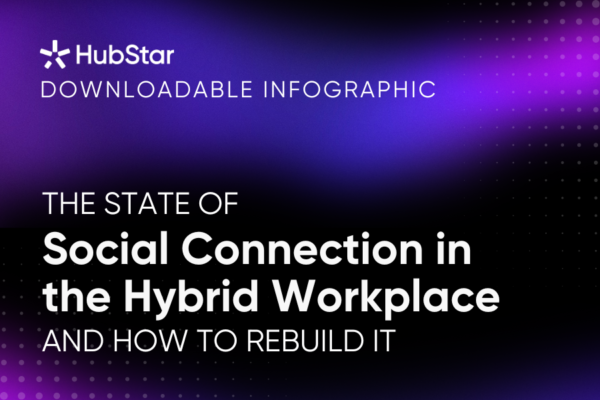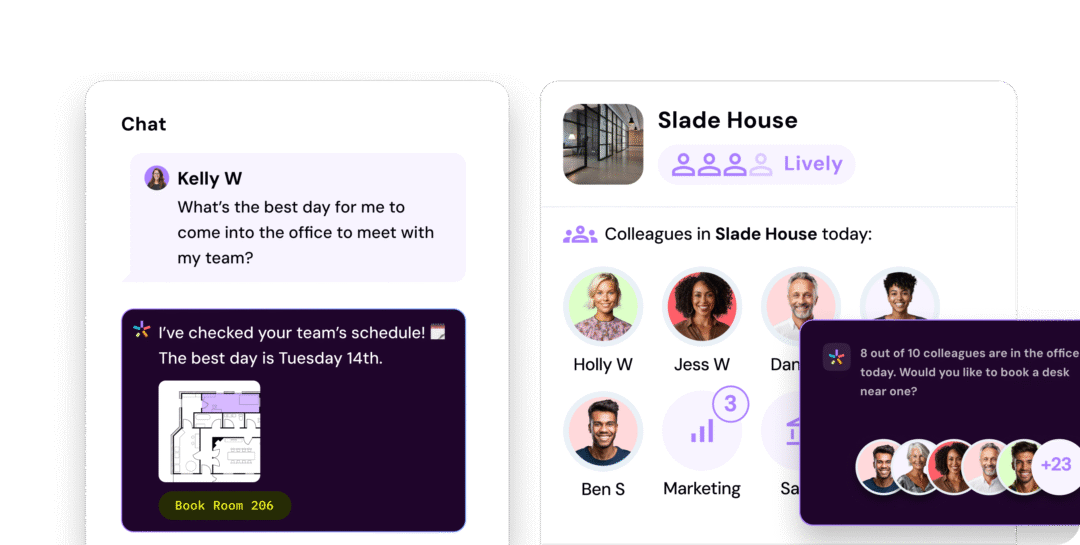Hybrid Work
Hushed Hybrid: Harmless or Harmful?
Hushed hybrid, the quiet trend of managers selectively allowing remote work while official return-to-office mandates remain in place, is becoming the workplace’s worst-kept secret. On the surface, it might look like a harmless way to offer flexibility, but this under-the-radar approach is quietly breeding resentment, toxic team dynamics, and deeper organizational harm. In this post, we unpack what hushed hybrid really is, why it’s so damaging, and what leaders can do to fix it before it erodes trust, wellbeing, and performance.

Ever heard someone whisper, “Don’t tell anyone, but my manager lets me work remote every other week”? Welcome to the world of hushed hybrid, the workplace’s worst-kept secret.
In this post, we’ll take a look at what hushed hybrid means for organizations, managers and employees, its insidious consequences and what to do to fix it.
Hushed Hybrid: a definition
Hushed hybrid occurs when managers quietly allow certain employees to maintain hybrid work patterns while supposedly enforcing strict return-to-office mandates at the organizational level. It’s the corporate equivalent of “rules for thee but not for me”.
Think of it as workplace speakeasy culture: “Keep this on the DL, but you can dial in from your kitchen on Thursdays.”
While it might seem like a harmless workaround that gives people the flexibility they want without triggering a Jamie Dillon-style CEO meltdown via Zoom, hushed hybrid is creating some insidious workplace consequences.
3 ways hushed hybrid is harming your organization
1) Resent and workplace toxicity
Nothing breeds workplace toxicity quite like perceived favoritism. When employees notice colleagues enjoying the flexibility they’ve been denied, the resentment machine kicks into high gear.
“Why am I dragging myself through rush hour traffic when Sarah from marketing gets to work from her garden?”
Coming into the office takes up more time and costs more money, so employees perceive it as making a sacrifice. Eventually, resentment turns from thought into action (or lack thereof), and suddenly multiple employees find themselves churning out mediocre work. As an individual, why should you do more than the bare minimum if other people are getting special treatment?
Replicate this train of thought a dozen times and teams turn toxic, and organizational performance plummets.
There’s a more human consequence here, too. Research shows that workplace resentment negatively impacts wellbeing, with employees who harbor resentment more likely to experience depression or even PTSD symptoms. Worse still, confirmation bias ensures that once employees feel they’re being treated unfairly, they’ll find additional evidence to support that belief—even where none exists.
Why does hushed hybrid trigger resentment when you’re not the one doing the hushing? It’s actually backed by science. Three major social theories explain why hushed hybrid arrangements feel so fundamentally wrong to us humans:
- Relative Deprivation Theory: We judge our situation not in absolute terms, but relative to others. When we see colleagues getting flexibility we don’t have, we feel deprived
- Belongingness Theory: humans have a fundamental need to belong. Secret arrangements create in-groups and out-groups, threatening our sense of belonging. So even if we know better on an objective level ,our brains are hardwired to view any kind of exclusion as being kicked out of the cave and into the cold to fight the saber tooth tigers single handedly
- Social Identity Theory: Our workplace is part of our identity. When the rules seem to apply differently to different people, it challenges our understanding of where we fit, and an identity crisis ensues
5 Ways to Improve Workplace Wellbeing
Poor mental health costs a whopping $1 trillion USD per year. Check out this post for 5 ways to give wellbeing a boost in your workplace.

2) Leadership disconnect
Here’s where it gets really interesting. Managers who permit these secret hybrid arrangements often don’t believe in the mandate themselves. This creates a fracture between upper leadership and middle management, with managers caught in an impossible position – publicly backing and enforcing policies they don’t support.
The numbers tell a grim story: According to Gallup’s recent State of the Workplace Report, managers experienced the sharpest decline in engagement last year, while engagement for individual employees remained consistent.
With 70% of team engagement attributable to managers, this disconnect is costly, to the tune of $438 billion globally in lost productivity due to disengagement.
3) Brain drain
With 50% of employees actively seeking new jobs and more companies slapping on strict RTO mandates, hushed hybrid is becoming a talent exodus hurricane. Employees aren’t just leaving for remote work – they’re leaving because of the perceived unfairness and lack of transparency. And ironically, managers are more than likely creating secret hybrid arrangements because they know their top performers will leave otherwise, but this ends up costing extra churn from other team members.
The Fix
The solution isn’t forcing everyone back to the office. That’s a sure-fire way to set off a domino effect of CV polishing amongst those who benefitted from hushed hybrid arrangements. On the flipside, letting everyone stay home means people lose out on the creativity, connection and wellbeing boosts that being in the office provide.
The solution is to create transparent, flexible frameworks that focus on results rather than attendance. The bad news is that occurrences of hushed hybrid at scale are the symptom of a broken organizational culture, and fixing that ranges much further than the next few points we’ll cover here.
Leadership accountability: own your policy decisions
If your return-to-office policy isn’t working, admit it. Hushed hybrid is all the evidence you need here. The data shows that companies without flexible work arrangements are less engaged, lose more employees, have less revenue growth and less diversity than their flexible peers.
So rather than pulling an ostrich, leadership needs to hold themselves accountable for mandate failures and work to set things right. People respect honesty and vulnerability from leadership, especially when decisions improve their workplace wellbeing. Employees are also used to a certain leadership demographic being vehemently opposed to policies that improve work-life balance and wellbeing. Research has shown executive-level men are more likely to resist changes that give employees more flexibility and work-life balance. Going against the grain, especially these days, builds engagement.
Do RTO Mandates Actually Rebuild Social Connection?
Uber is the latest company to issue a hard line RTO mandate. But do mandates actually rebuild social connection?

Make attendance purposeful, not forced
Taking away choice takes away the magic. Providing choice creates autonomy, and autonomy positively impacts creativity, according to this 2015 study.
Purposeful attendance starts with a core organizational belief that individuals are capable enough to decide how and where to get their best work done. As Spotify’s CHRO Karina Berg wisely put it, “You can’t spend a lot of time hiring grown-ups and then treat them like children.”
To create policy frameworks for purposeful attendance on a company level, understand what positives people get from coming into the office. Buzz-building days with your team? Sound-proof booths away from the kids? Free breakfast burritos? The possibilities are endless and varied.
Then, start being honest about who’s in the office and when. Digital workplace platforms (like Hubstar Connect) show who’s in and what’s going in the office without the awkward “who’s in on Tuesday?” Slack messages. When flexibility is visible, it stops feeling like a secret perk.
Infographic: The State of Social Connection in the Hybrid Workplace & How to Rebuild It
How do you create an environment that nurtures connection and collaboration without having to slap on a heavy-handed mandate? Download this infographic for 3 useful tips.

Prioritize results over attendance
As NMG’s CEO, Geoffroy van Raemdonck, puts it: “We wanted a culture of accountability and results. We gave employees more flexibility and empowerment and, in return, got much higher engagement and higher performance.”
Best Buy’s Results Only Work Environment (ROWE) is another perfect example. When associates gained control over their working hours, engagement soared. When the same approach was applied at GAP, this approach increased engagement scores by 10 points and reduced turnover by 50%.
Ready to hit delete on hushed hybrid and move towards transparent, flexible hybrid policies that boost purposeful attendance?
Check out HubStar Connect, a next-generation workplace scheduling and experience solution that makes in-office collaboration with the right people effortless, smoothes over uneven occupancy patterns and measures the success of your hybrid work policies and guidelines.
Watch Connect Explainer

Share this post
You might also like

















